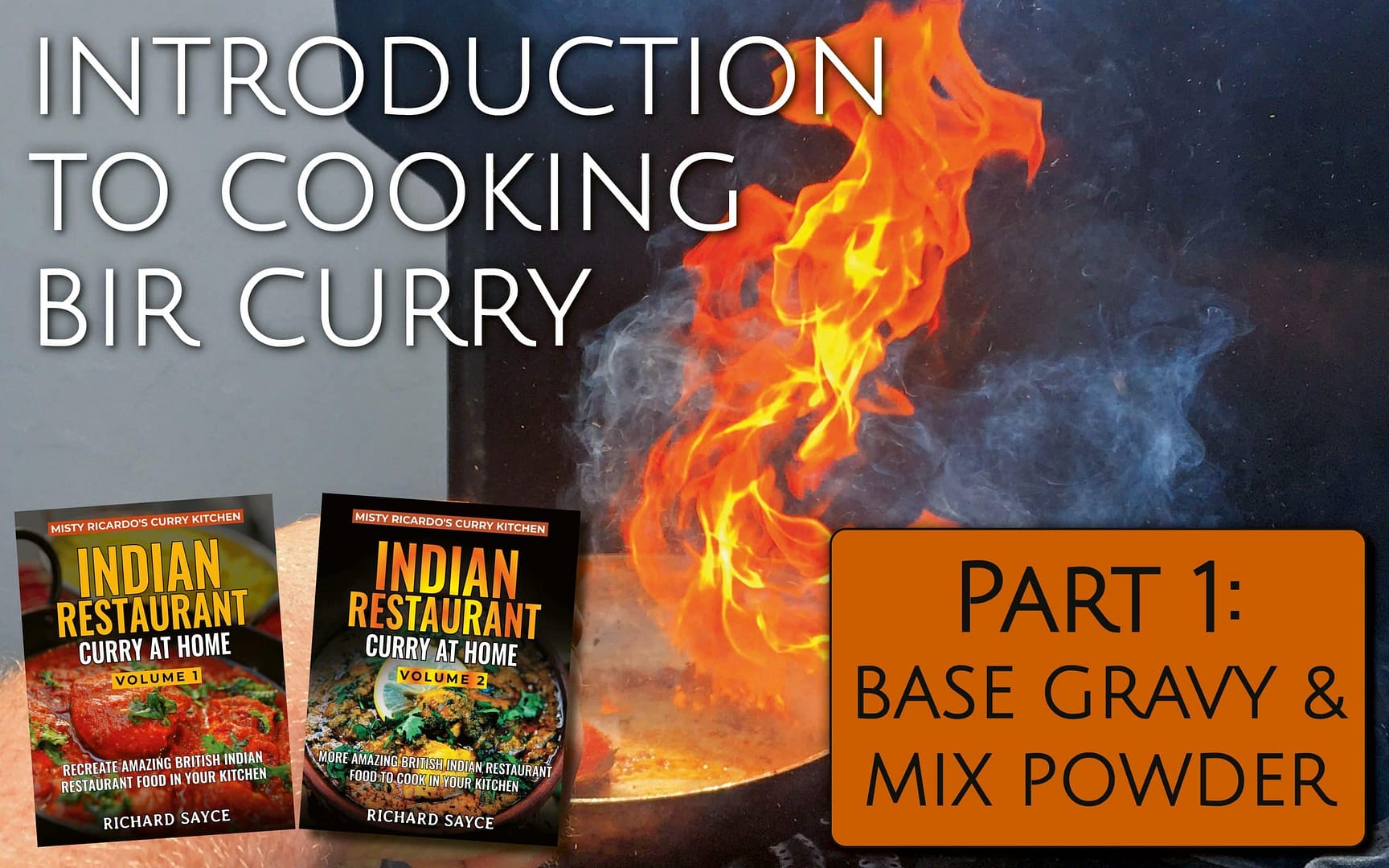Preamble
Ingredients will only get you so far; it’s what you do with them that counts. This holds true for all forms of cuisine, but it is exceptionally important with the British Indian Restaurant (BIR) style of cooking (almost unbelievably so).
The difference between a bad curry and a good one can be because of many things – sometimes even which way the wind is blowing! These factors can be elusive to identify and rectify, and along the way I have suffered a lot of frustration, false confidence, disappointment and headaches, but ultimately gained great satisfaction, relief, moments of elation, and a modicum of wisdom.
Some of those words may well describe your own experiences so far with cooking BIR food, which would not surprise me in the least. Don’t worry, it’s normal to get emotional about it, if not a little neurotic!
The most important part of learning to cook BIR curry is the journey itself. I hope this guide will help propel you along that journey in the most appropriate ways. The cooking methods or techniques are the most important things to analyse, practice and learn. Take a deep breath, be brave, and grab the bull by the horns!
The Building Blocks of Restaurant Style Curry
Indian food, whether from near or far, can be correctly described as having multiple layers of flavour. In BIR cooking these layers are incorporated into a curry at different stages using ingredients that are usually pre-cooked or at least pre-prepared in some way.
These BIR curry ‘layers’ or ‘building blocks’ are made up of most if not all the following:
- Oil
- Whole Spices
- Chopped Onion
- Ginger/Garlic
- Mix Powder and other Powdered Spices
- Tomato Paste
- Pre-cooked Chicken, Lamb, Vegetables, or Prawns
- Base Gravy
If you are unfamiliar with ‘mix powder’ and ‘base gravy’, then now is the time to be introduced. They are essential foundations of BIR cooking.
Base Gravy
This is a mild stock made from onions and several other supporting ingredients, which together form the basic ‘theme’ of all curries that are made using it. Onions have a lot of flavour and are essential to the flavour of BIR cuisine: get used to peeling and chopping them!
The process of making base gravy usually involves simmering halved or quartered onions in oil, often accompanied by other vegetables in lesser amounts, such as pepper, carrot, cabbage, and potato. Spices, tomato, and other more delicate ingredients such as fresh coriander are added later with water. Ultimately everything is thoroughly blended to a smooth liquid.

Base Gravy
On its own, base gravy should not have a strong taste. It should taste pleasant with no particular flavours dominating it, like a mild soup. Remember that it’s a foundation for all curries cooked with it: you don’t want every curry to taste the same.
When cooking a curry the base gravy is reduced, which further concentrates and enhances the flavour. The onions then become the main star of the show. When cooking the curry on high heat, delicious flavour compounds are created from them by caramelisation and other chemical reactions. It’s as much important as what you do DO with the base gravy than what’s in it.
There are of course many different recipes for base gravy. Every restaurant or takeaway will have a slightly different version, and some will even profess to adding ‘special ingredients’.
Be sure to check out my base gravy recipes, included in my books, Curry Compendium, and Indian Restaurant Curry at Home Volumes 1 & 2.
NOTE: Before using one of my base gravies to make my curry recipes, it should be thinned down with water to the approximate consistency of semi-skimmed milk
Mix Powder
This is another foundation ingredient that helps set the overall ‘theme’. Mix powder is a mixture of common spices, and, like base gravy, it has no particular dominant flavour.
The most typical spices included are cumin, coriander, turmeric, and a good quality shop-bought Madras curry powder. Often paprika and garam masala are also added.
Base Gravy
Mix powder is always added to curries at an early stage of cooking, and is fried to release the essential oils of the constituent spices. While care must be taken not to burn them, it’s important to fry the spices enough to bring out the best flavour.
As with base gravy there are many variations of mix powder, with each BIR kitchen having its own blend. Check out my main mix powder recipe.
This article features sample content from my books Curry Compendium and Indian Restaurant Curry at Home Volume 1.







0 Comments